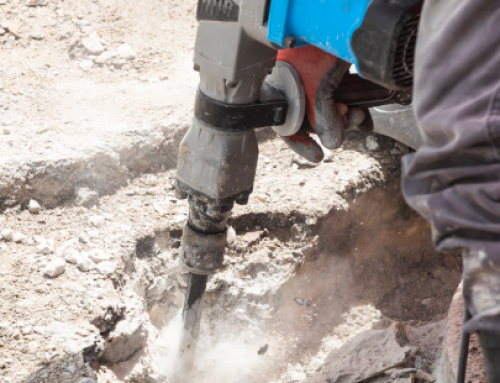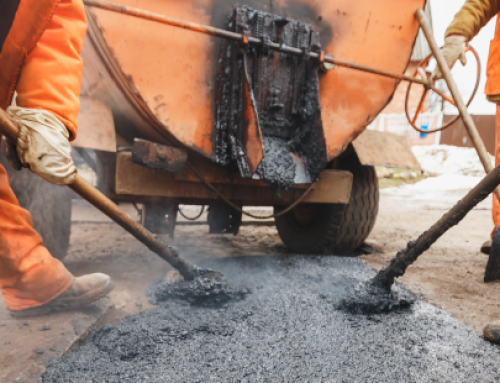You can find asphalt everywhere – it’s used to build roads, parking lots, sidewalks, airport runways, playgrounds, bike paths, and tennis courts. In liquid form, asphalt is used to coat pipes, roofing, and the undercarriages of vehicles. But even though it’s part of our everyday lives, most people have no idea what asphalt is or how it’s made.
Asphalt is the material that binds crushed stone and gravel, also known as aggregate, together to create a hard, strong surface. Asphalt is a bitumen-class hydrocarbon mixture and is usually a dark-brown to black color. Bitumen is a geological term to describe naturally occurring deposits of petroleum in a semi-solid or solid form.
The History of Asphalt
Asphalt is one of the oldest engineering substances known to man. It dates back to 2600 B.C., when the ancient Egyptians used it as a preservative and waterproofing agent for wrapping mummies. Other ancient civilizations used asphalt for building everything from roads to irrigation systems.
Natural asphalts were widely used until the early 20th century, but today most asphalt is refined from crude oil. While today’s asphalt has the same long-lasting traits as naturally occurring asphalt, it also has the added benefit of being produced to a uniform state free of impurities. These days, it’s used for 94% of American roads.
The Manufacturing Process
There are several steps in the production of asphalt. Crude oil, or petroleum, is separated into its various fractions through a distillation process at the oil refinery. Since asphalt is the heaviest component of crude petroleum, it doesn’t boil off or evaporate during the distillation process. Asphalt is essentially the heavy residue left over from the oil refining process.
1. Distillation
The first step in the process of refining asphalt is rapidly heating the crude oil. Once heated, it’s moved into a distillation container where the lighter-weight and more volatile components, called fractions, are removed by condensing and cooling instruments.
The crude is then separated to produce paraffin, gasoline, diesel fuel, kerosene, and other petroleum products. The heavy deposit remaining after the distillation process is known as “topped” crude – and it’s used to make heating oil or other products, like asphalt.
2. Cutting Back
Next, asphalt may be blended or “cut back” with a volatile substance to produce a more pliable product at a lower temperature than pure asphalt. When the cut-back asphalt is used for paving or construction, the volatile element evaporates when exposed to heat or air – leaving the hard asphalt. The speed of evaporation of the cutting agent determines the curing rate of the asphalt.
3. Emulsifying
Asphalt may also be emulsified to produce a liquid that can be easily pumped through pipes, mixed with aggregate, or sprayed through nozzles. To emulsify, the asphalt is ground into globules smaller than 5 microns and mixed with water. An emulsifying agent is added to reduce the tendency of the asphalt and water to separate. Emulsifying agents used to produce asphalt may be colloidal clay, soap, silicates, or vegetable oils.
4. Pulverizing
Hardened asphalt is pulverized to produce a powdered asphalt. Once the asphalt is crushed, it passes through a series of fine mesh sieves to ensure uniform-sized granules. Powdered asphalt is then mixed with road oil and aggregate for pavement construction. Heat and pressure in the road slowly amalgamate the powder with the aggregate and binding oil, and the mixture hardens to a cement-like consistency.
5. Air Blowing
If the asphalt is to be used for roofing or other coating purposes, the asphalt may have air blown into it. This process produces a material that softens at a higher temperature than paving asphalts. The asphalt is heated to 500 degrees Fahrenheit during the air-blowing process, and then air bubbles are forced into the liquid for several hours. The asphalt remains liquid when cooled.
Paving Mixtures
There are two types of asphalt-paving mixes – hot-mix and cold-mix:
1. Hot-mix asphalt (HMA) results from heating the aggregate and asphalt before mixing to remove moisture and obtain adequate fluidity for proper mixing and spreading. HMA is typically used for high-traffic areas, like highways and main roads.
2. Cold-mix asphalt (CMA) is generally used for paving light-to-medium-traffic secondary roads, remote locations, or maintenance use. CMA is made with emulsified or cut-back asphalt.
To produce HMA, aggregate and asphalt are mixed at a facility where it’s first heated and then mixed to the appropriate consistency. Hot-mix plants may be at a permanent location or mobile and moved from one job site to another.
Drum-mixing is another process that blends the asphalt and aggregate at the same time. Measured amounts of aggregate and asphalt are dumped into a mixing chamber called a pugmill. After mixing, the material is then placed into trucks or storage containers.
The HMA is then trucked to the job site, poured out, and spread by a paving machine into a uniform layer. While it’s still hot, the mixture is compacted by heavy rolling machines to produce a smooth, even pavement surface.
Quality Control
The quality of asphalt is affected by the fundamental properties of the petroleum it’s made from. That’s because different oil fields and refining methods produce crude oils with distinctive characteristics. For construction and engineering purposes, there are three essential factors to consider:
1. Consistency
Asphalt is graded based on the ranges of consistency, or viscosity, at a given temperature. If careful attention isn’t given to mixing and temperature-control procedures, it will cause more damage to the asphalt during the hardening phase than many years of vehicle traffic. A standardized penetration or viscosity test is used to measure paving asphalt consistency. Air-blown asphalts typically use a softening point test.
2. Purity
The purity of asphalt is easily tested since it’s almost entirely composed of bitumen, which is soluble in carbon disulfide. Refined asphalts are frequently more than 99.5% soluble in carbon disulfide, and any remaining impurities are inert.
3. Safety
Asphalt is free of moisture when it leaves the refinery, but the transport vehicle may have trace amounts of water in its tank. The moisture can cause the asphalt to foam when heated above 212 degrees Fahrenheit, which is a safety hazard. If asphalt is heated to a high enough temperature, it will release fumes that can flash in the vicinity of a spark or flame. The 212-degree safety threshold is much higher than typical temperatures in paving operations.
Premium Asphalt Paving & Sealcoating can help with your next project!
When considering your next asphalt project, Premium Asphalt Paving & Sealcoating can help you every step of the way – from layout design to finishing and detailing the asphalt surface. We have the experience, training, and skill needed for jobs both big and small.
Contact us today if you’re looking for asphalt installation, repair, or surface replacement. We offer a wide range of services for residential, commercial, and industrial businesses in the Bryan/College Station and surrounding Brazos Valley. Call us at 979-220-3831 for a free consultation and estimate.








